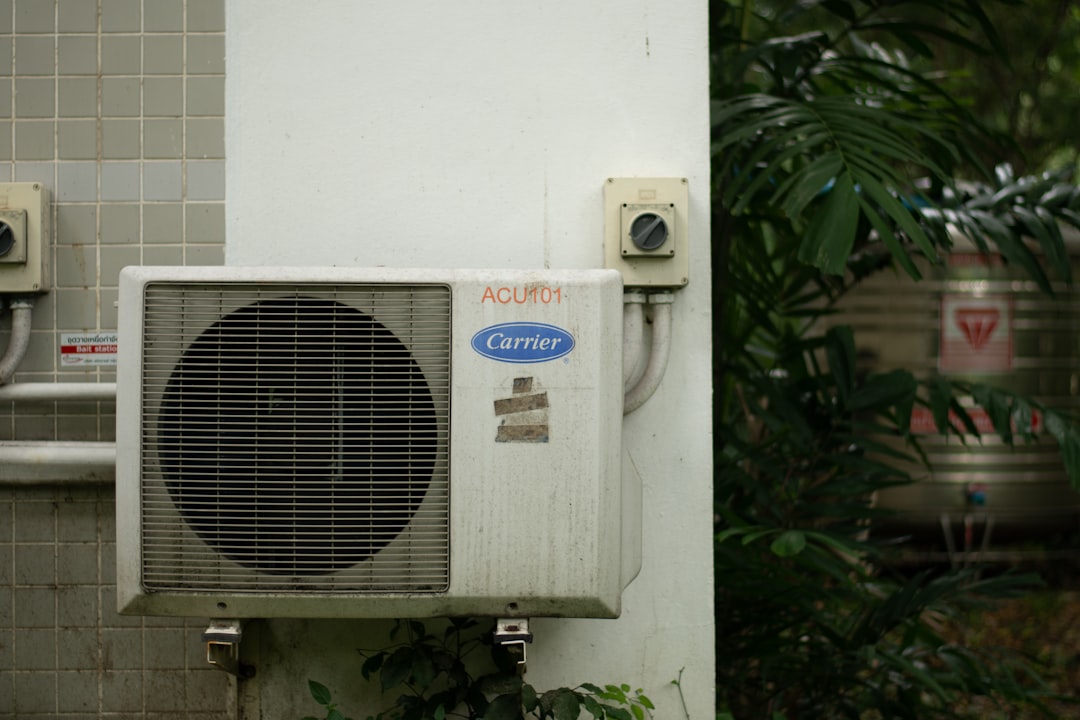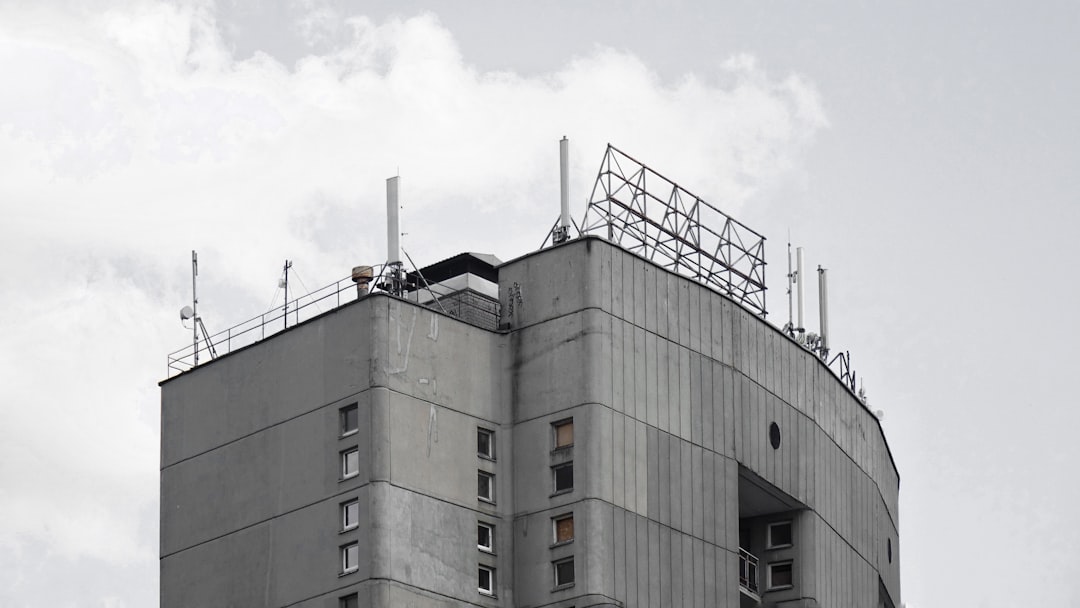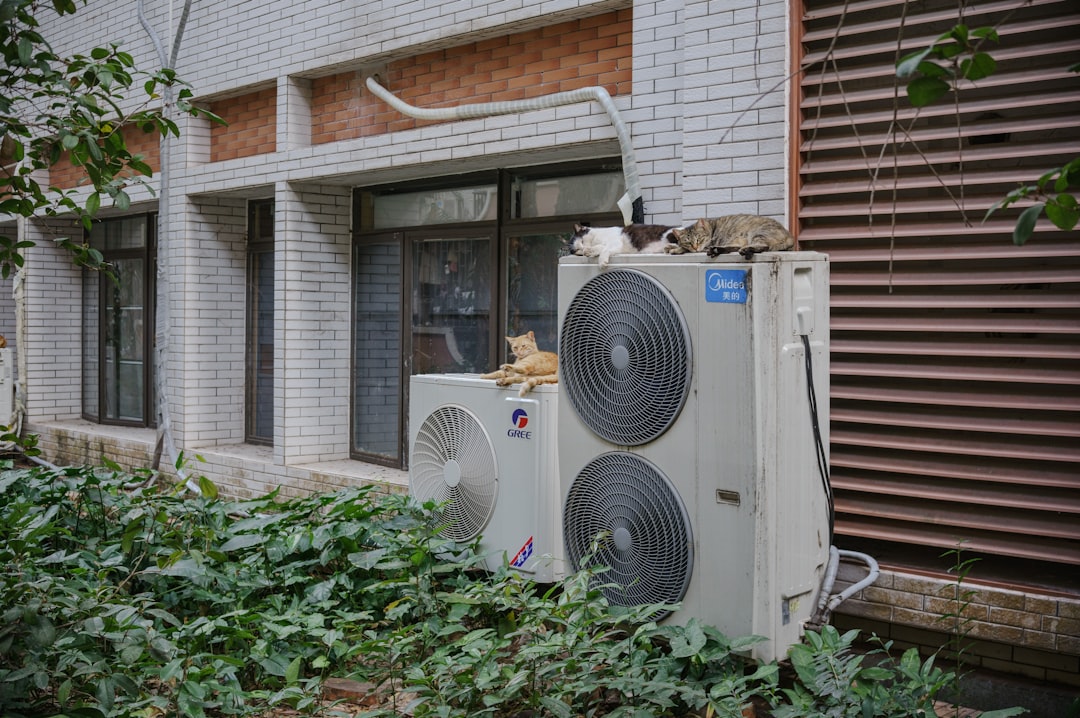

Engage prospects with a scan and streamline customer engagement with FREE QR code marketing tools by Sona – no strings attached!
Create a Free QR CodeFree consultation

No commitment

Engage prospects with a scan and streamline customer engagement with FREE QR code marketing tools by Sona – no strings attached!
Create a Free QR CodeFree consultation

No commitment
The demand for advanced air purification and indoor air quality solutions has never been higher, especially as organizations prioritize health, compliance, and operational efficiency. Yet, traditional approaches often leave air cleaning equipment providers struggling to maintain meaningful customer engagement and fully demonstrate equipment ROI to their commercial clients. Providers routinely contend with missing high-value prospects who interact with brochures or on-site equipment but never make it into a CRM, as well as ongoing issues with tracking post-sale maintenance and usage, resulting in lost opportunities for education, upsell, and ongoing support.
QR codes now serve as a modern bridge between physical air cleaning equipment and live digital experiences, helping providers address the disconnect between analog processes and digital engagement. By embedding QR codes into marketing, installation, and maintenance workflows, providers can deliver instant access to training assets, technical support, warranty and compliance registration, and real-time indoor air quality monitoring. These digital touchpoints generate actionable insights, revealing not just who interacts with equipment, but how and when, solving the longstanding frustration of anonymous traffic and untracked end-user behaviors.
This article explores practical applications of QR codes for air cleaning equipment providers, focusing on strategies to eliminate manual processes, drive measurable business outcomes, and enrich the customer journey. Providers are moving beyond static materials, using scalable, trackable digital tools that create new value for clients and internal teams alike.

Air cleaning equipment providers face persistent challenges in following their products and customers from initial sale through daily use, often leading to incomplete data, missed follow-ups, and a lack of visibility into real equipment engagement. This makes it difficult to identify which clients need support or are primed for upgrades, and it hampers the shift toward proactive service models. The result is a cycle of reactive service, guesswork-driven marketing, and underutilized assets in the field.
QR codes transform these outdated, paper-based processes and static touchpoints into measurable, actionable data flows. Instead of relying on printed manuals or forgotten paper forms, modern solutions allow providers to digitize the entire path from install to renewal. Scans can trigger specific workflows such as training, registration, and maintenance scheduling while capturing attribution data that feeds your CRM and analytics tools for continuous improvement.
With a dedicated QR platform, every individual product, campaign, or client group can be assigned unique codes, allowing providers to consolidate engagement analytics, bridge CRM blind spots, and respond to real client behaviors. Tangible examples include swapping hand-signed filter change logs for a mobile check-in solution, digitizing compliance tracking so nothing falls through the cracks, and transforming printed catalogs into interactive, trackable product finders. Platforms like Sona QR support these workflows end to end, from code generation and dynamic linking to analytics and CRM sync.

Air cleaning equipment providers often struggle with a lost connection between deployed equipment and actionable customer data, making it hard to deliver ongoing education, support timely maintenance, or capture usage signals for upsell opportunities. The customer’s path is full of offline-to-online moments that do not get measured, which leads to inconsistent service and missed revenue. QR codes address these shortfalls by turning every surface into a digital entry point backed by measurable data.
By enabling a one-scan path to support, resources, and forms, QR codes reduce friction for facility managers, installers, and procurement teams. They also give providers a reliable way to keep content updated without reprinting materials, which is crucial in a category with frequent specification updates and shifting compliance rules.
Real-world examples include QR codes on HVAC units or commercial air purifiers that connect directly to troubleshooting flows, filter ordering, or compliance logs. These links create a closed loop from deployment through every engagement and eliminate the common frustrations caused by incomplete or outdated account intelligence.
Choosing the right QR format matters because it shapes the user’s experience and the quality of the data you collect. Air cleaning equipment providers operate across a mix of locations, from schools and hospitals to warehouses and retail. Each environment presents different connectivity constraints, user roles, and security parameters. Tailoring QR formats to those contexts ensures fast adoption and reliable outcomes.
Dynamic QR codes are especially useful in this vertical because content such as installation guides, compliance documentation, and IAQ dashboards can change over the equipment lifecycle. With dynamic codes, you update the destination without reprinting labels, saving costs and reducing confusion.
With a platform like Sona QR, providers can generate, manage, and track all of these formats in one place. You can then optimize destination experiences based on ongoing analytics, segment responses by role, and keep content aligned with the latest product changes.

Revenue leaks often occur when critical moments across the equipment and customer lifecycle go untracked. This includes prospects who interact with brochures or demos but never enter the funnel, as well as customers whose maintenance or usage signals go unnoticed by account teams. QR codes offer a practical way to capture these interactions at every stage and link them to measurable next steps.
The most impactful placements align with moments of high intent or frequent friction. By placing QR codes where questions arise or actions need to happen, you reduce delays while capturing valuable data. The result is a more complete picture of product engagement and a more efficient process for guiding customers to the right outcome.
Strategically embedded QR codes reduce disconnects across sales, marketing, and support. Every scan becomes an event that your teams can act on, ensuring the customer journey is documented and every growth opportunity is measurable.

Persistent problems such as delayed maintenance, unregistered equipment, and lost warranty claims cost providers time and revenue. QR-based workflows solve these issues by meeting users where they work and channeling each scan into a specific, measurable action. The most valuable use cases are those that convert routine interactions into structured data and serviceable requests.
Start by aligning use cases to the lifecycle: onboarding, daily use, compliance, and renewal. Each stage can be powered by QR triggers that accelerate tasks and bring visibility to activities that previously went untracked.
Air cleaning equipment providers who adopt these QR workflows gain the transparency needed to nurture customer relationships, document service history, and identify opportunities for upsell or contract renewal. Over time, providers build a robust data set that can forecast consumable usage, highlight sites at risk of service issues, and support proactive outreach.
A recurring industry frustration is the inability to identify, segment, and re-engage high-value users at the right stage of their journey. Buyers and users vary widely, from procurement officers to EHS directors to site-level technicians. Without context, retargeting can be wasteful or irrelevant. Every QR scan is an opportunity to shift from anonymous interactions to actionable engagement.
By deploying multiple QR codes tuned to the lifecycle and role, you can segment audiences automatically and route them into the right follow-ups. Scans tell you intent and urgency. A maintenance scan suggests immediate operational needs. A brochure scan at a trade show indicates interest and education. A filter reorder scan implies readiness for subscription discussions.
With Sona QR, each QR code becomes a smart entry point into your funnel, capturing structured data on intent and context. Integrations with CRM and advertising platforms let you activate these insights immediately, improving retargeting precision and reducing wasted spend. For step-by-step tactics, see Sona’s Playbook “Intent-Driven Retargeting: Driving High-Impact Campaigns with First-Party Intent Signals.”
Air cleaning equipment providers often juggle many channels: print brochures for spec-heavy products, events for demos, direct mail for renewals, and in-field signage for maintenance. Without a unifying mechanism, measuring what works becomes guesswork. QR codes unify these channels by converting offline moments into digital actions that can be tracked, optimized, and scaled.
A multi-channel approach anchored by QR also improves the user experience. Buyers get the exact next step without searching or typing URLs. Internal teams gain clarity on which placements and messages perform best. Over time, you build a data-backed model of how prospects and customers move from awareness to renewal.
With a centralized platform like Sona QR, you can manage codes across channels, monitor performance, and sync scan data with your CRM and ad platforms. This turns multichannel marketing into a connected, measurable system.
QR programs succeed when they are tied to a clear business goal and a thoughtful deployment plan. You do not need to overhaul every workflow at once. Start with one or two high-impact use cases, prove value with data, then scale across teams and sites. The following checklist outlines an approach that reduces risk and accelerates measurable outcomes.
Each step includes guidance for air cleaning equipment providers, from code selection and design to deployment and optimization. Follow the steps in order, and treat insights as a feedback loop that informs your next iteration.
Define the problem you want to solve. Examples include low warranty registrations, missed service triggers, untracked onboarding, stalled filter subscriptions, or underperforming event follow-up. The use case should map directly to a measurable business outcome such as higher registrations, faster service response, or increased consumables revenue.
Select static or dynamic codes based on flexibility and tracking needs. Static codes work for permanent destinations with no need for updates. Dynamic codes allow you to modify destinations, add UTM parameters, and collect granular analytics without reprinting. If you plan to iterate or expand, platforms like Sona QR make updates and analytics simple.
Effective design increases scan rates and reduces confusion. The QR code should be visible, clearly labeled with a call to action, and tested in real-world conditions. See QR codes in marketing for design and deployment tips.
Roll out codes where engagement signals and actions often get lost. Start with placements that deliver a quick win, then expand as you collect data.
Monitoring and iteration are where ROI compounds. Treat every scan as a data point you can use to refine design, destination, and messaging.

Air cleaning equipment providers consistently report frustration over unclear ROI from marketing and support initiatives. The difficulty often stems from disconnected data and an inability to attribute outcomes to specific touchpoints in the field. QR codes change that by making every scan a measurable event that you can connect to tangible business results. For measurement frameworks, read Sona’s blog post “The Essential Guide to Offline Attribution: Maximizing ROI Through Offline Channels.”
The goal is to move beyond vanity metrics, connect scans to meaningful actions, and attribute impact to revenue. With the right platform integrations, you can see how a scan on an equipment sticker leads to a registration, a maintenance booking, and eventually a contract renewal.
With Sona QR and Sona.com, you can go further. Sona QR captures real-world scan data with time, device, and location detail. Sona.com enriches identities, synchronizes with CRMs like HubSpot and Salesforce, and applies multi-touch attribution, so you can tie QR activity to pipeline and revenue. The result is a performance marketing engine that finally includes your offline-to-online touchpoints.
Scaling QR success requires process discipline and creativity. As you add codes to more surfaces and campaigns, consistency in tracking and follow-up becomes essential. Clear calls to action, trained staff, and automation will significantly raise your scan-to-action conversion rates.
Think beyond the most obvious placements and look for hidden opportunities that staff and customers encounter frequently. This is where you can nudge high-value actions like renewals, feedback, or adoption of energy-efficient models that qualify for incentives.
By embedding these approaches, providers address the sector’s persistent pain points and ensure every piece of marketing collateral, equipment, or training delivers trackable value. Consistency and iteration will raise engagement and make the data you collect more predictive over time.
Consistent, measurable offline-to-online engagement remains a challenge for many air cleaning equipment providers. Missed opportunities, fragmented customer journeys, and ambiguous ROI are common when field-deployed assets operate outside the analytics stack. QR codes have emerged as a foundational way to translate offline touchpoints into digital insights and workflows that improve service and growth.
Providers who strategically deploy QR experiences can create a connected customer journey from first touch to renewal. Each scan can be routed to resources that educate, tools that guide decisions, or forms that initiate support. Meanwhile, providers capture the who, what, when, and where of engagement for better forecasting, retargeting, and customer success.
Adopting QR-enabled workflows gives air cleaning equipment providers unprecedented visibility, flexibility, and accountability. Every product and customer touchpoint becomes a data-driven opportunity that accelerates service, strengthens relationships, and proves ROI. With Sona QR, you can generate and manage codes, monitor performance, and sync insights to your CRM in minutes. With Sona.com, you can attribute scans to pipeline and revenue, unifying your offline and online engagement into one performance system.
Start with one high-impact use case such as warranty registration or maintenance booking. Generate your first QR codes with Sona QR, deploy them on-unit and in your manuals, and watch as real-world engagement turns into measurable results across your business. Start creating QR codes for free.
QR codes have revolutionized the air cleaning equipment providers industry by transforming traditional product interactions into seamless, measurable customer engagement opportunities. Whether it’s streamlining access to product manuals, enabling quick maintenance scheduling, or providing instant air quality data, QR codes empower providers to enhance customer experiences and foster stronger client relationships with ease.
Imagine instantly knowing which product information customers access most or which service offers drive repeat business—all in real time. With Sona QR, you can create dynamic, trackable QR codes that update instantly without reprinting, giving you the flexibility to optimize campaigns and connect every scan directly to revenue growth. No guesswork, just actionable insights that propel your business forward.
Start for free with Sona QR today and turn every scan into a meaningful connection, a satisfied customer, and a measurable success.
They embed QR codes into marketing, installation, and maintenance workflows to provide instant access to training, technical support, warranty registration, and real-time monitoring, enabling measurable engagement and proactive service.
Integrating QR codes enhances operational efficiency, enables dynamic content updates, tracks user engagement, simplifies maintenance and compliance logging, and improves customer education and support.
Providers place QR code stickers on units that prompt users to digitally schedule maintenance, log filter changes, and automate service requests, replacing manual calls with trackable workflows that ensure compliance.
Creative uses include placing QR codes on invoices for renewal offers, on janitorial closet checklists for compliance updates, on filter packaging for subscription sign-ups, and on field service vehicles or uniforms to route to service requests.
QR codes on control units provide facility managers instant access to IAQ dashboards, alert settings, and metrics, enabling timely responses to air quality issues and preventing downtime or complaints.
Use Sona QR's trackable codes to improve customer acquisition and engagement today.
Create Your FREE Trackable QR Code in SecondsJoin results-focused teams combining Sona Platform automation with advanced Google Ads strategies to scale lead generation

Connect your existing CRM

Free Account Enrichment

No setup fees
No commitment required

Free consultation

Get a custom Google Ads roadmap for your business






Launch campaigns that generate qualified leads in 30 days or less.
